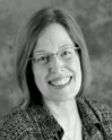Three members of the Hamilton faculty have been promoted to the rank of professor. Associate Professor of Chemistry Karen Brewer, Associate Professor of Communication Catherine Phelan, and Associate Professor of Biology Patrick Reynolds were promoted, retroactive to July 1.
Brewer came to Hamilton College in 1989 and teaches undergraduate courses in advanced and intermediate inorganic chemistry and general chemistry. She earned a Ph.D. from Massachusetts Institute of Technology.
 |
| Karen Brewer in the lab with Elizabeth Faroh '08. |
In February Brewer was awarded a $36,500 grant from the Camille and Henry Dreyfus Special Grant Program in the Chemical Sciences. The grant is for her proposal "Materials Chemistry Project Laboratories for Descriptive Inorganic Chemistry." This project will introduce x-ray powder diffraction as a technique for the characterization of a wide range of inorganic materials into the laboratory curriculum for the course "Inorganic and Materials Chemistry 265." The Special Grant Program in the Chemical Sciences funds "projects that propose to advance the science of chemistry in innovative ways" and is "intended to seed the initial phases" of a project.
Her research has also been funded by the Research Corporation and the Petroleum Research Fund of the American Chemical Society.
| Catherine Waite Phelan |
Recent publications address a theory of video that challenges current assumptions regarding the role of television. She has published articles in Critical Studies in Mass Communication, Cultural Studies, Symbolic Interaction, and Proteus, among others. Her recent book, titled Mediation and the Communication Matrix, (Peter Lang, 2003) discusses how the screen in its myriad forms has contributed to an emerging view of the self in American culture that is unique to our time.
Phelan's teaching interests include courses on media theory, the First Amendment, and technology and society. She has done a great deal to revive public speaking activities on our campus, including promoting the Debate Team and speaking competitions.
 |
| Pat Reynolds in biology lab |
Posted December 13, 2005

